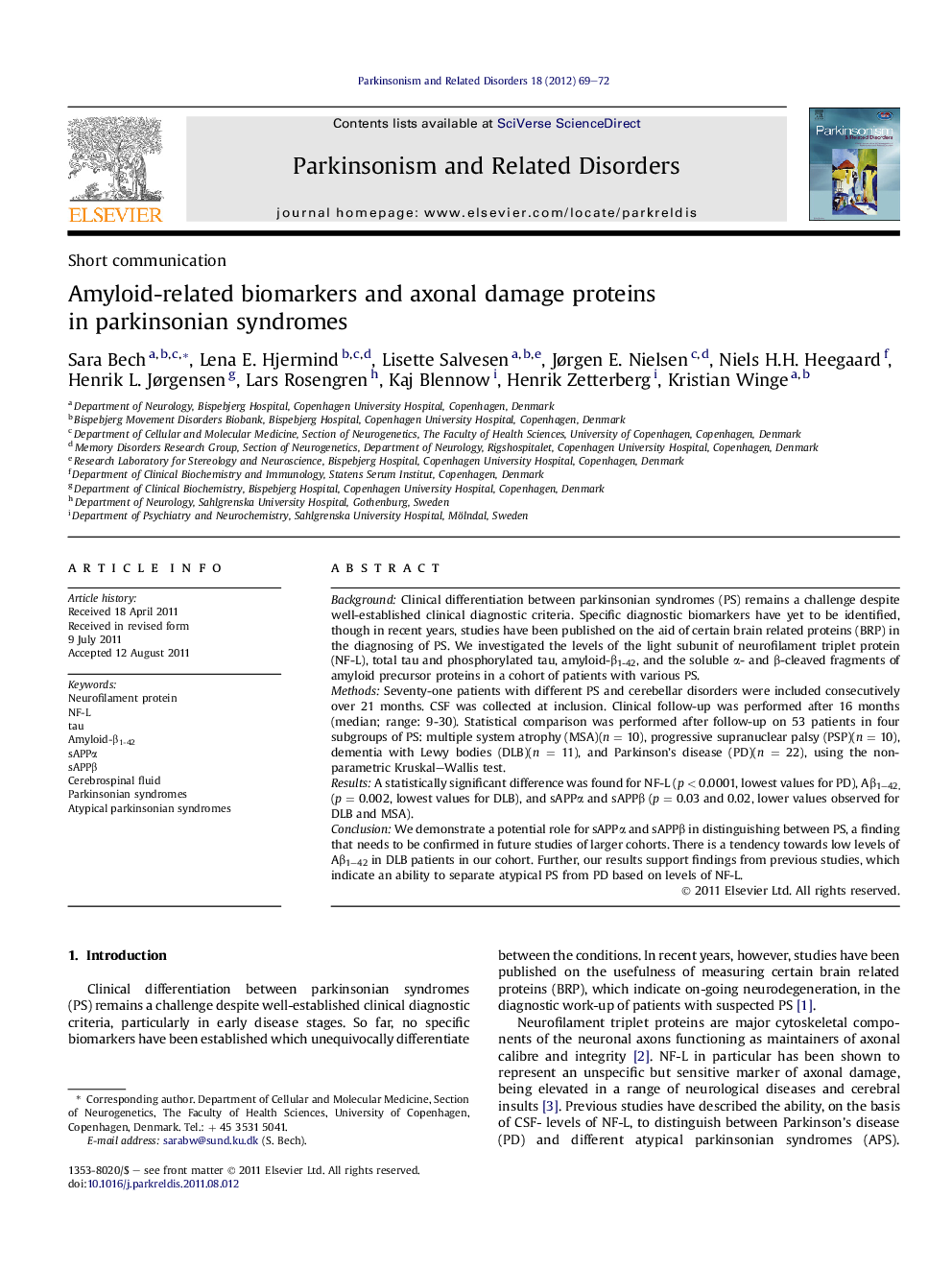| Article ID | Journal | Published Year | Pages | File Type |
|---|---|---|---|---|
| 1920667 | Parkinsonism & Related Disorders | 2012 | 4 Pages |
BackgroundClinical differentiation between parkinsonian syndromes (PS) remains a challenge despite well-established clinical diagnostic criteria. Specific diagnostic biomarkers have yet to be identified, though in recent years, studies have been published on the aid of certain brain related proteins (BRP) in the diagnosing of PS. We investigated the levels of the light subunit of neurofilament triplet protein (NF-L), total tau and phosphorylated tau, amyloid-β1-42, and the soluble α- and β-cleaved fragments of amyloid precursor proteins in a cohort of patients with various PS.MethodsSeventy-one patients with different PS and cerebellar disorders were included consecutively over 21 months. CSF was collected at inclusion. Clinical follow-up was performed after 16 months (median; range: 9-30). Statistical comparison was performed after follow-up on 53 patients in four subgroups of PS: multiple system atrophy (MSA)(n = 10), progressive supranuclear palsy (PSP)(n = 10), dementia with Lewy bodies (DLB)(n = 11), and Parkinson’s disease (PD)(n = 22), using the non-parametric Kruskal–Wallis test.ResultsA statistically significant difference was found for NF-L (p < 0.0001, lowest values for PD), Aβ1–42, (p = 0.002, lowest values for DLB), and sAPPα and sAPPβ (p = 0.03 and 0.02, lower values observed for DLB and MSA).ConclusionWe demonstrate a potential role for sAPPα and sAPPβ in distinguishing between PS, a finding that needs to be confirmed in future studies of larger cohorts. There is a tendency towards low levels of Aβ1–42 in DLB patients in our cohort. Further, our results support findings from previous studies, which indicate an ability to separate atypical PS from PD based on levels of NF-L.
